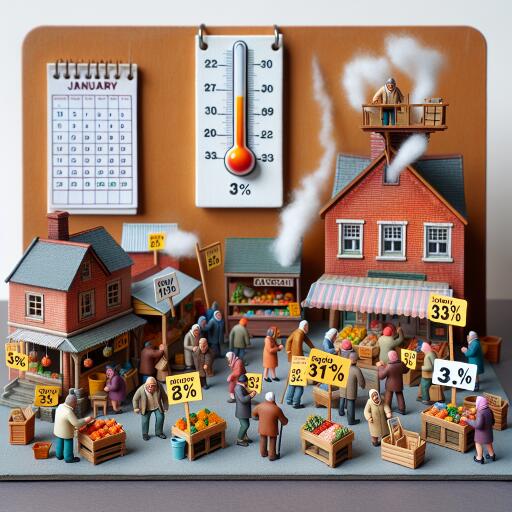In January, inflation rates surged unexpectedly, primarily driven by significantly high shelter costs that placed additional financial burdens on consumers. According to the Bureau of Labor Statistics within the Labor Department, the consumer price index (CPI)—an encompassing measure reflecting the prices individuals encounter for a diverse array of goods and services throughout the economy—rose by 0.3% for the month. This increment carries the annual rate to a notable 3.1%.
This increase surpassed the anticipations of economists polled by Dow Jones, who had predicted a more modest monthly rise of 0.2% and an annual surge of 2.9%.
When setting aside the fluctuating sectors of food and energy, the core CPI, which provides a more stable view of price changes, escalated by 0.4% in January. Comparatively, on an annual scale, this metric displayed a 3.9% increase. These figures exceeded the projections, which were set at a monthly increase of 0.3% and an annual boost of 3.7%.
A significant portion of the upward pressure on inflation stemmed from the shelter sector, which holds approximately one-third of the CPI’s weighting. This category saw a 0.6% rise over the month, contributing to over two-thirds of the overall increase, as stated by the Bureau of Labor Statistics (BLS). Analyzing it on an annual basis, the shelter prices climbed by an alarming 6%.
Additionally, food prices experienced an uptick, rising by 0.4% within the month. In contrast, the energy sector presented a slight relief by decreasing 0.9%, with this reduction largely attributed to a notable 3.3% drop in gasoline prices.
The publication of these inflation figures led to a sharp decline in stock market futures. Specifically, futures associated with the Dow Jones Industrial Average fell by more than 250 points, while Treasury yields experienced a significant rise.
These inflation data emerge at a crucial time for Federal Reserve officials as they deliberate on achieving a balanced approach to monetary policy in 2024. Despite financial markets advocating for rigorous interest rate reductions, the policymakers have exercised caution in their public communications. They emphasize the importance of allowing empirical data to guide their decisions rather than conforming to pre-established expectations.
Federal Reserve officials maintain the outlook that inflation will revert to their 2% annual target, largely due to the anticipation that shelter prices will moderate throughout the year. Nevertheless, the January surge in shelter costs presents a challenge for the central bank, which is eager to relax the stringent monetary policy measures that have been the most restrictive in over two decades.
